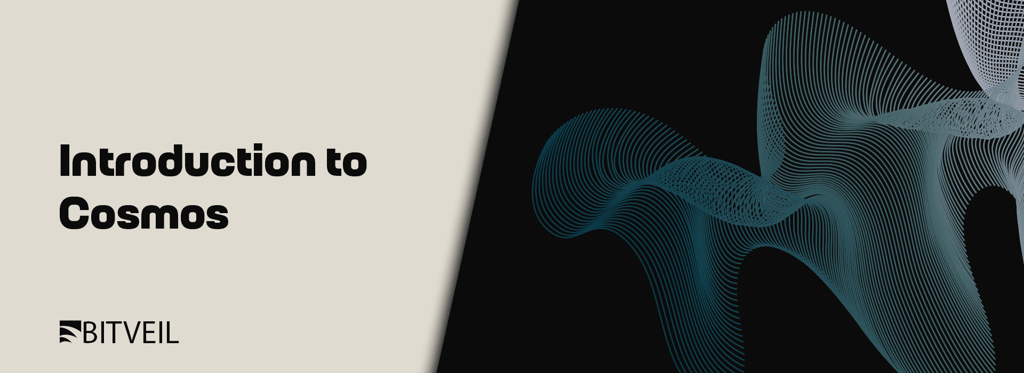Introduction to Cosmos: How Hub, Zones, and Interoperability Work
Explore Cosmos blockchain: learn how hubs, zones, and interoperability work to boost connectivity and innovation in this ecosystem.
COSMOSPROOF OF STAKE
Bitveil Team


The blockchain space is fragmented - most blockchains operate in silos, making it difficult for assets and data to move between different networks.
That’s where Cosmos comes in. Often called the "Internet of Blockchains", Cosmos is designed to connect multiple blockchains, allowing them to communicate and exchange value seamlessly.
If you're building a Web3 project, Cosmos offers a scalable, interoperable, and modular ecosystem that removes many of the limitations of traditional blockchains.
What is Cosmos?
Cosmos is a decentralized network of independent blockchains that can interact with each other. Unlike Ethereum or Bitcoin, which operate as single blockchains, Cosmos allows multiple chains to coexist while remaining interoperable.
💡 Think of Cosmos like the internet for blockchains, where different networks can send and receive data just like websites and apps do on the internet.
Cosmos is unique for several reasons:
🔹 Interoperability: Different blockchains can communicate and exchange tokens.
🔹 Scalability: Each chain operates independently, preventing congestion.
🔹 Sovereignty: Developers can create their own blockchains with full control.
🔹 Security: Cosmos offers shared security models to protect new networks.
Instead of having one main blockchain, Cosmos is made up of many interconnected Zones, all linked through the Cosmos Hub.
How Cosmos Enables Interoperability
1. The Cosmos Hub
How Cosmos Hub and Zones work
The Cosmos ecosystem consists of two main components:
The Cosmos Hub is the central blockchain of the Cosmos network. It:
✅ Connects different blockchains (Zones) using the IBC protocol
✅ Provides a marketplace for tokens and data transfer
✅ Acts as a bridge between different chains
But the Cosmos Hub does not control the entire network: it’s just one blockchain within the larger ecosystem.
2. Cosmos Zones (Independent Blockchains)
Each Zone is an independent blockchain that connects to the Cosmos Hub.
Cosmos Zones can:
✅ Create their own governance rules and tokenomics
✅ Use their own consensus mechanisms (PoS, PoA, etc.)
✅ Communicate with other Zones via IBC (Inter-Blockchain Communication)
💡 Example: Sentinel, Bitsong, and Jackal are all Cosmos Zones that operate independently but can transfer tokens and data between each other.
This modular structure allows Cosmos to scale efficiently without congestion—each Zone processes its own transactions instead of relying on a single network.
Traditional blockchains struggle to communicate with each other. Cosmos solves this problem using IBC (Inter-Blockchain Communication)—a protocol that allows trustless data and asset transfers between different chains.
How IBC works
1️⃣ A user initiates a transfer on one blockchain (Zone A).
2️⃣ IBC locks the asset in a smart contract and issues a corresponding asset on another chain (Zone B).
3️⃣ The transfer is verified through validators, ensuring security.
This allows:
🔗 Tokens to move freely across Cosmos blockchains
🔗 Cross-chain smart contracts and dApps
🔗 Seamless DeFi interactions between networks
💡 Example: A DeFi app on Osmosis (a Cosmos-based DEX) can allow users to swap tokens from multiple Cosmos blockchains using IBC.
Why Cosmos is game changer
Cosmos is designed for developers who want to launch scalable, independent blockchains without sacrificing interoperability.
🚀 Build Custom Blockchains Easily: Cosmos SDK allows anyone to create a custom blockchain instead of deploying a smart contract on Ethereum.
🔗 Seamless Cross-Chain Transactions: Cosmos-native tokens can move across networks without third parties.
⚡ High Scalability & Low Fees: Each blockchain (Zone) processes its own transactions, avoiding congestion.
🌎 Growing Ecosystem: Popular Cosmos projects include Osmosis (DEX), Akash (Cloud Computing), Sentinel (DVPN), and Jackal (Decentralized Storage).
Cosmos provides the flexibility of building independent chains while maintaining the benefits of interoperability - something that most other blockchain networks struggle with.
Want to Build on Cosmos? Let’s Work Together!
© 2025 Sociable Weavers s.r.l.
UNVEIL WEB3 POTENTIAL

